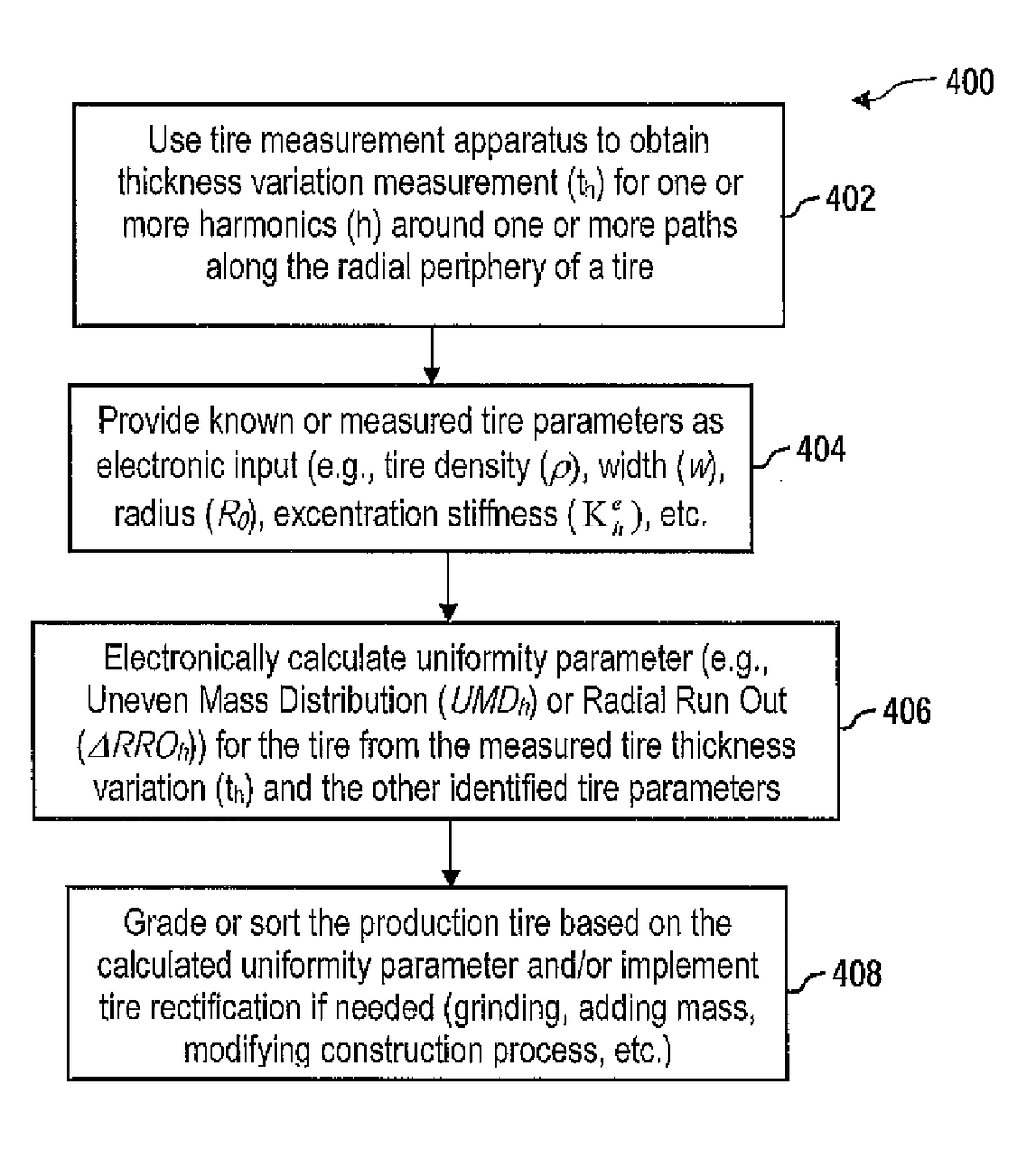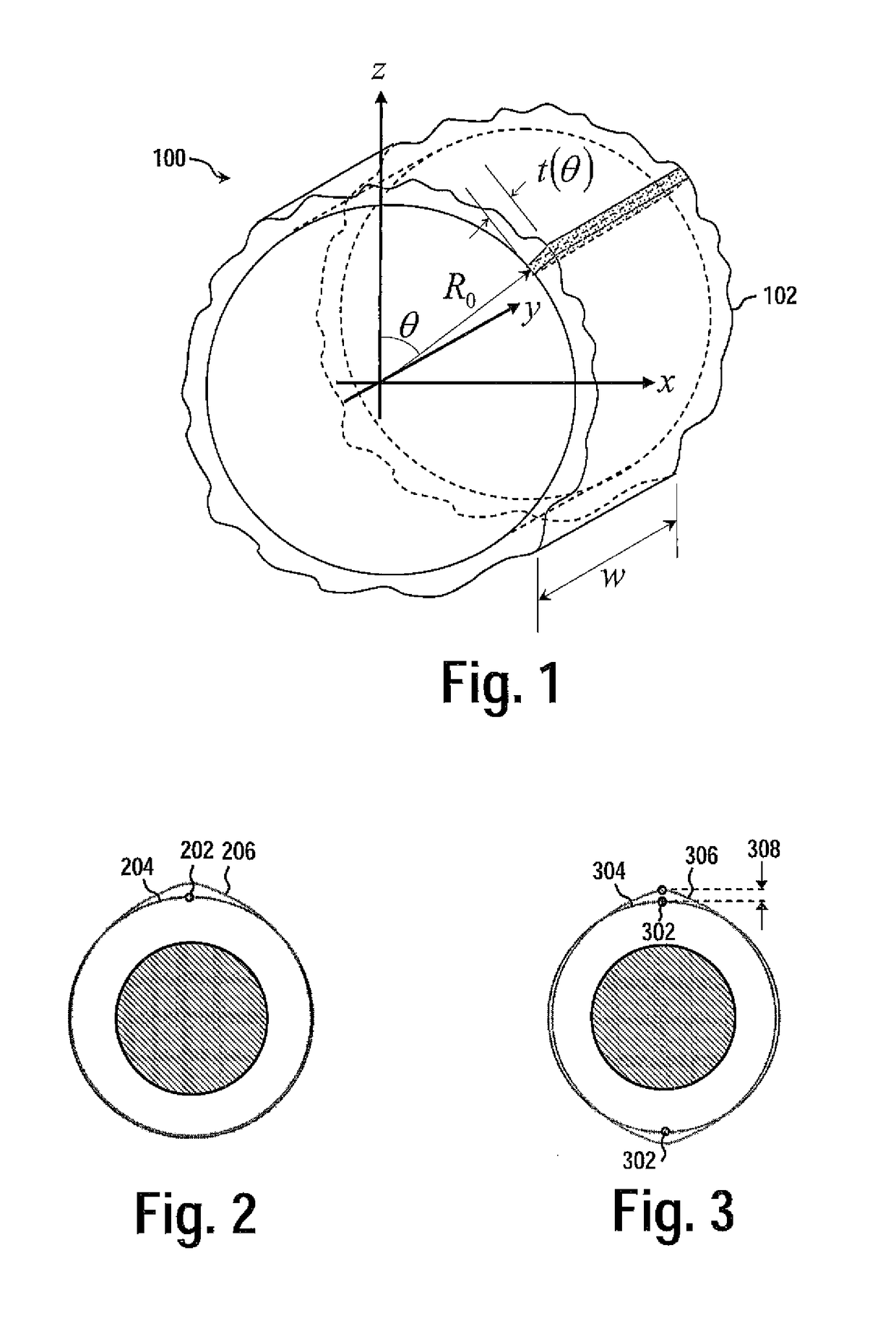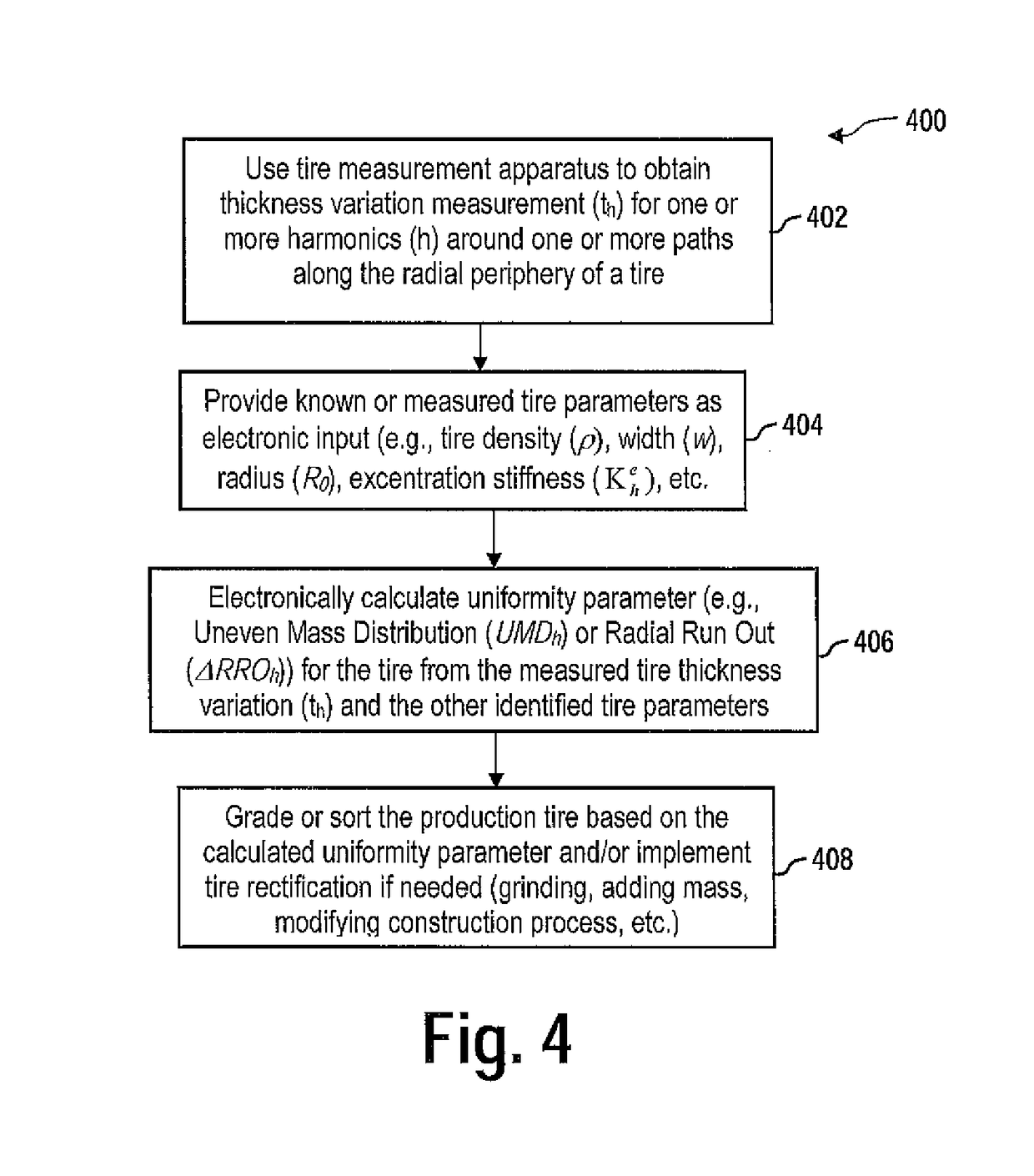Method for prediction and control of tire uniformity parameters from crown thickness variation
a technology of uniformity and tire thickness, applied in the direction of process and machine control, computer control, instruments, etc., can solve the problems of tire non-uniformities, tire non-uniformities are important, and the non-uniformities present in the tire structure produce periodic-varying forces
- Summary
- Abstract
- Description
- Claims
- Application Information
AI Technical Summary
Benefits of technology
Problems solved by technology
Method used
Image
Examples
first embodiment
[0055]In step 402, the crown thickness variation is measured for a tire built in accordance with a single stage process. In this exemplary process, a carcass is made on a confection drum, and is thus initially formed as a cylinder. The carcass is then loaded onto a finishing drum and inflated. The steel belts and tread are applied directly to the inflated carcass and a “green” tire is born. This “green” tire, also sometimes referred to in the literature as a “cover” or “bandage,” represents the production tire before the curing process. In further accordance with a single stage manufacturing process, it should be appreciated that it may not be feasible to measure the crown thickness variation directly. Instead, the thickness variation or false round of the initial carcass can be measured along with the thickness variation or false round of the green tire. The crown thickness variation can then be determined via subtraction or regression of the measured carcass and green tire values....
second embodiment
[0056]In step 402, the crown thickness variation is measured for a tire built in accordance with a two stage process, which is often a more conventional form of tire production. Some examples of a two-stage process involve similar formation of a tire carcass on a confection drum. As with the single stage process, the carcass is subsequently loaded onto a finishing drum and inflated. In other examples, the confection and the finishing drum can be one in the same, such that the carcass is ultimately built, inflated and finished all on the same drum. In each of these options, however, instead of applying the crown products directly to the inflated carcass, the crown products are first assembled as a crown package on an intermediate formation drum, and the crown package is transferred to the inflated carcass. In this formation option, the crown thickness variation would be measured while the crown package is still on the intermediate formation drum.
third embodiment
[0057]In step 402, the crown thickness variation is measured for a tire built in accordance with a variation of the above-described two stage processes. In such example, a tire carcass is built on a confection drum, and is then transferred to a finishing drum and inflated. As in the single stage process, the steel belts are laid directly on the carcass. The tread, however, is laid on an intermediate formation drum before being transferred to the finishing drum. Crown thickness variation is measured for the tread while it is on the intermediate formation drum. As such, in this third exemplary embodiment, the crown thickness variation corresponds to a measure of the tread thickness level.
[0058]In a fourth exemplary embodiment of step 402, all tire products are laid on a solid core that has the shape of a finished tire. The thickness variation of the final tire product can be measured after completion of the green tire before curing. Such measurement can be compared with subtraction or...
PUM
 Login to View More
Login to View More Abstract
Description
Claims
Application Information
 Login to View More
Login to View More - R&D
- Intellectual Property
- Life Sciences
- Materials
- Tech Scout
- Unparalleled Data Quality
- Higher Quality Content
- 60% Fewer Hallucinations
Browse by: Latest US Patents, China's latest patents, Technical Efficacy Thesaurus, Application Domain, Technology Topic, Popular Technical Reports.
© 2025 PatSnap. All rights reserved.Legal|Privacy policy|Modern Slavery Act Transparency Statement|Sitemap|About US| Contact US: help@patsnap.com



